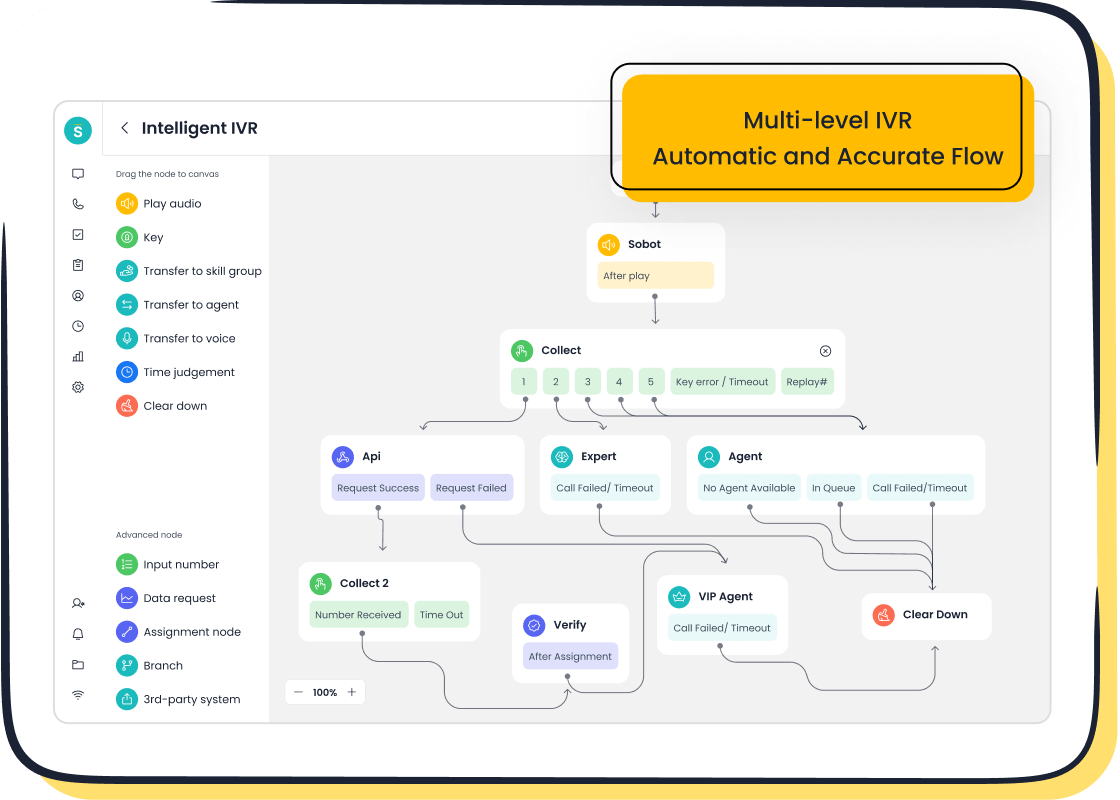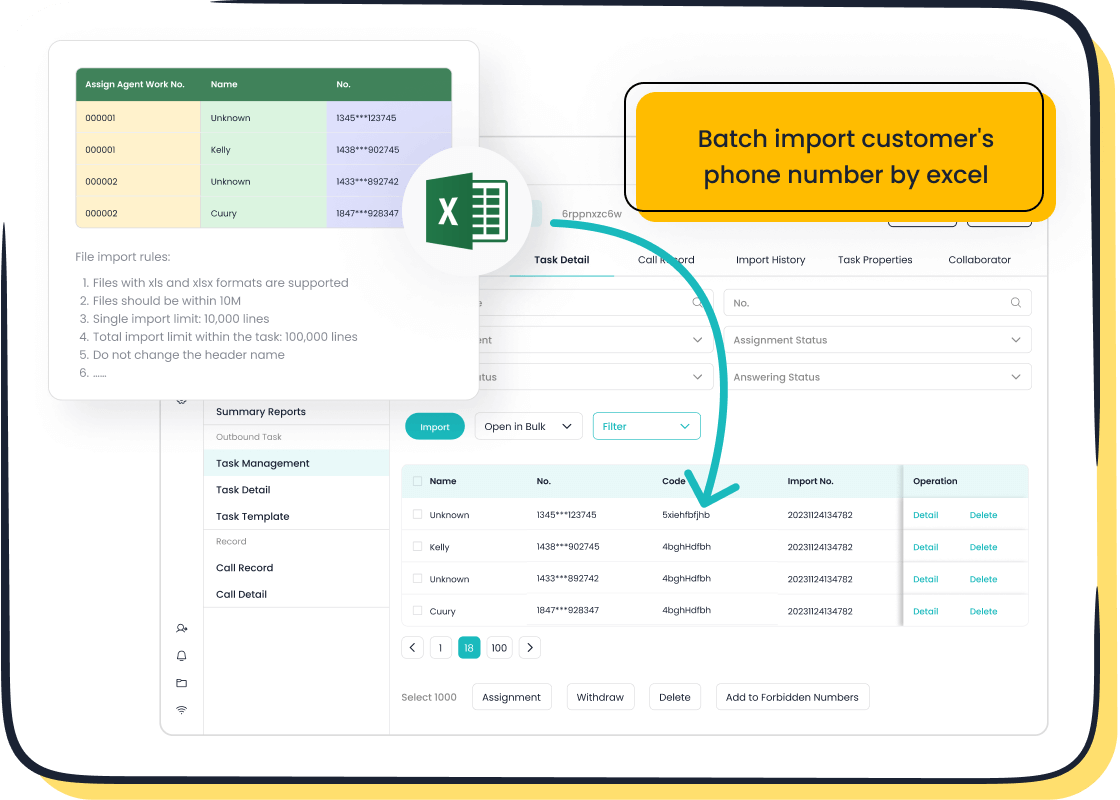How to Design and Implement a Customer Service System

A well-designed customer service system plays a pivotal role in shaping the customer experience. It ensures that your customers feel valued and supported, which directly impacts their loyalty and satisfaction. Research shows that 93% of customers are likely to make repeat purchases when they receive great customer service. Moreover, 70% of Americans are willing to spend more with businesses that prioritize excellent customer care. By implementing an effective customer care strategy, you can not only meet but exceed customer expectations. Companies like Sobot provide customer service systems examples that enhance efficiency and foster long-term relationships.
Understanding Customer Service Systems and Their Importance
What Is a Customer Service System?
Definition and purpose of a customer service system.
A customer service system is a structured framework designed to manage and enhance interactions between your business and its customers. It combines tools, processes, and people to ensure seamless communication and problem resolution. The primary purpose of this system is to improve the customer experience by addressing inquiries, resolving issues, and fostering trust. By implementing such a system, you can streamline operations, reduce response times, and build stronger relationships with your customers.
Key components: tools, processes, and people.
Every effective customer service system relies on three core components:

- Tools: These include software like ticketing systems, live chat platforms, and AI-powered solutions. For instance, Sobot’s customer support tools, such as its Voice/Call Center, provide features like intelligent IVR and smart call routing to enhance efficiency.
- Processes: Clear workflows ensure consistency in handling customer inquiries. Standardized processes help your team deliver reliable and high-quality service.
- People: Your customer support team plays a vital role. Training and empowering them with the right resources ensures they can address customer needs effectively.
By integrating these components, you create a system that not only supports your team but also elevates the overall customer journey map.
Why a Customer Service System Is Essential for Businesses
Benefits of implementing a structured system.
A well-implemented customer service system offers numerous benefits that directly impact your business growth:

- Increased efficiency: Businesses with structured systems experience up to 8% higher revenue growth compared to those without. Tools like Sobot’s Voice/Call Center automate repetitive tasks, allowing your team to focus on complex issues.
- Enhanced customer loyalty: Great service fosters trust and encourages repeat business. Studies show that excellent customer care can significantly boost retention rates.
- Cost reduction: Automation and streamlined workflows reduce operational costs. For example, AI-powered tools handle routine inquiries, freeing up human agents for priority tasks.
- Improved analytics: Customer service systems provide valuable insights through performance metrics. These analytics help you identify areas for improvement and optimize your processes.
Customer service systems examples from various industries.
Businesses across industries have successfully implemented customer service systems to transform their operations. For example:
- Retail: Companies use live chat and ticketing systems to handle high volumes of inquiries during peak seasons.
- Life sciences: Agilent, a leader in diagnostics, partnered with Sobot to integrate an omnichannel workbench and AI chatbot. This resulted in a sixfold increase in efficiency and a 25% cost reduction.
- Gaming: Gaming companies rely on customer support tools to manage player inquiries and ensure smooth gameplay experiences.
These customer service systems examples highlight how businesses can tailor solutions to meet their unique needs. By adopting the right tools and strategies, you can create a system that aligns with your goals and enhances the customer experience.
Step-by-Step Guide to Designing a Customer Service System
Define Your Customer Service Vision
Setting SMART goals for customer service.
Establishing a clear vision begins with setting SMART (Specific, Measurable, Achievable, Relevant, Time-bound) goals. These goals provide a roadmap for your customer service system. For example, you might aim to reduce average response time by 20% within six months or achieve a 90% customer satisfaction rate by the end of the year. Clear objectives help your team stay focused and measure progress effectively. A well-defined vision ensures that every action aligns with your desired outcomes.
Aligning the vision with business objectives.
Your customer service vision should align with your broader business goals. If your company prioritizes customer retention, your system should focus on building loyalty through personalized interactions. For instance, integrating customer service tools like Sobot’s Voice/Call Center can streamline communication and enhance customer satisfaction. By aligning your vision with business objectives, you create a cohesive strategy that drives growth and improves the overall customer experience.
Identify Customer Needs and Communication Channels
Conducting surveys and creating customer personas.
Understanding your customers starts with gathering insights. Surveys are a powerful way to identify pain points and preferences. For instance, 80% of customers have switched brands due to poor experiences, highlighting the importance of addressing their needs. Use this data to create detailed customer personas. These personas represent your target audience and guide your team in delivering tailored support. Knowing your customers helps you design a system that meets their expectations.
Mapping customer touchpoints and preferred channels.
Mapping customer touchpoints reveals how customers interact with your business. Identify key moments, such as inquiries, purchases, or feedback submissions. Determine which channels they prefer, whether it’s live chat, email, or phone calls. For example, customer servicing platforms like Sobot unify these channels, ensuring seamless communication. By understanding touchpoints and preferences, you can optimize your system to provide consistent and efficient support.
Choose the Right Tools and Technology
Overview of essential tools, including Sobot’s Voice/Call Center.

The right tools form the backbone of your customer service system. Essential tools include ticketing systems, live chat platforms, and call centers. Sobot’s Voice/Call Center stands out with features like intelligent IVR, smart call routing, and real-time monitoring. These capabilities enhance efficiency and ensure smooth interactions. Choosing robust tools ensures your team can handle inquiries effectively and deliver exceptional service.
Criteria for selecting tools: scalability, integration, and ease of use.
When selecting customer service tools, prioritize scalability, integration, and ease of use. Scalability ensures your system grows with your business. Integration allows seamless connection with existing systems, such as CRMs. Ease of use minimizes training time and boosts team productivity. For instance, Sobot’s solutions offer simple integration and user-friendly interfaces, making them ideal for businesses of all sizes. By focusing on these criteria, you build a system that supports long-term success.
Implementing Your Customer Service System
Train and Empower Your Team
Developing training programs for customer service staff.
Your team forms the backbone of your customer service system. To ensure they deliver effective customer service, invest in comprehensive training programs. These programs should focus on building essential skills such as communication, problem-solving, and empathy. According to experts, well-trained agents are crucial for fostering lasting relationships with customers. Set clear and measurable objectives for your training sessions. For example, aim to improve first-contact resolution rates or reduce average handling times. By equipping your team with the right knowledge and tools, you empower them to handle inquiries confidently and efficiently.
Encouraging a customer-first mindset across the organization.
A customer-first mindset transforms how your team approaches service. Encourage your staff to prioritize empathy and actively listen to customer concerns. When customers reach out, they often face challenges that require immediate attention. Training your team to resolve issues efficiently can prevent frustration and build trust. Continuous development programs, like those offered by leading organizations, emphasize the importance of maintaining high service standards. By fostering this mindset, you create a culture where every employee values the customer experience.
Create and Document Workflows
Standardizing processes for consistent service delivery.
Consistency is key to delivering effective customer service. Standardized workflows ensure that every inquiry follows a clear and structured process. Document these workflows to guide your team in handling various scenarios. For instance, outline steps for resolving common issues or escalating complex cases. This approach minimizes errors and ensures customers receive reliable support. A well-documented workflow also helps new team members adapt quickly, reducing onboarding time and maintaining service quality.
Using Sobot’s workflow automation features to streamline operations.

Automation simplifies repetitive tasks and enhances efficiency. Sobot’s customer service software offers workflow automation features that optimize your operations. For example, the system can automatically assign tickets to the appropriate agents based on predefined rules. This reduces response times and ensures inquiries reach the right person. Additionally, Sobot’s tools provide real-time monitoring, allowing you to identify bottlenecks and make adjustments. By leveraging automation, you free up your team to focus on more complex customer needs.
Integrate Tools and Systems
Connecting customer service tools with existing business systems.
Integration is essential for creating a seamless customer service system. Connect your customer service tools with existing business systems like CRMs or e-commerce platforms. This integration provides a unified view of customer data, enabling your team to deliver personalized support. For example, linking Sobot’s Voice/Call Center with your CRM allows agents to access customer history during calls. This ensures faster resolutions and a more tailored experience. Integration also eliminates the need for manual data entry, reducing errors and saving time.
Ensuring seamless communication across all channels.
Customers expect consistent support across multiple channels. Ensure your customer service system unifies communication platforms like email, live chat, and phone calls. Sobot’s tools excel in this area by consolidating interactions into a single workspace. This feature allows agents to manage inquiries efficiently without switching between systems. Unified communication improves response times and ensures customers receive consistent service, regardless of their preferred channel. By streamlining communication, you enhance the overall customer experience.
Monitoring and Optimizing Your Customer Service System
To ensure your customer service system remains effective, you must continuously monitor its performance and make necessary adjustments. This process helps you maintain high standards, improve customer satisfaction, and align your customer service strategy with evolving business goals.
Track Key Performance Indicators (KPIs)
Examples of KPIs: response time, resolution rate, and customer satisfaction.
Tracking KPIs is essential for evaluating the success of your customer service management efforts. Key metrics like response time, resolution rate, and customer satisfaction provide valuable insights into your system's performance. For instance, 67% of customers report that faster response times significantly enhance their experience. Monitoring these metrics allows you to identify areas for improvement and optimize your customer service strategy.
Using Sobot’s analytics tools to measure performance.
Sobot’s analytics tools simplify performance tracking by offering real-time data and detailed reports. These tools help you measure critical KPIs such as time to resolution and cost per resolution. By leveraging these insights, you can refine your customer service management processes and ensure your system operates efficiently. Sobot’s solutions also enable you to visualize trends, making it easier to adapt your strategy to meet customer expectations.
Gather and Act on Customer Feedback
Setting up feedback loops to capture customer insights.
Customer feedback is a powerful resource for improving your customer service system. Setting up feedback loops, such as surveys or post-interaction reviews, helps you gather actionable insights. For example, you can ask customers about their journey through your digital customer service channels. This information highlights pain points and reveals opportunities for enhancement.
Implementing changes based on feedback to improve the system.

Acting on feedback demonstrates your commitment to customer satisfaction. Use the insights you collect to address recurring issues and refine your customer service strategy. For instance, if customers express frustration with long wait times, you can implement tools like Sobot’s Voice/Call Center to streamline communication. Regularly updating your system based on feedback ensures it remains relevant and effective.
Regularly Review and Update the System
Conducting periodic audits to identify gaps.
Periodic audits are crucial for maintaining a robust customer service system. These audits help you identify gaps in your processes, tools, or team performance. For example, analyzing your digital customer service channels may reveal inefficiencies in handling inquiries. Addressing these gaps ensures your system continues to meet customer needs and supports retention efforts.
Adapting the system to evolving customer needs and business goals.
Customer expectations and business objectives change over time. Adapting your system to these changes is vital for long-term success. For instance, as more customers prefer digital interactions, integrating advanced tools like Sobot’s AI-powered solutions can enhance your digital customer service capabilities. Regular updates keep your system aligned with your goals and ensure a seamless journey for your customers.
A well-designed customer service system is essential for driving customer satisfaction and fostering business growth. By implementing a structured approach, you can enhance efficiency, improve customer retention, and build lasting relationships. Continuous monitoring and improvement ensure your system adapts to evolving customer expectations and industry trends. Regularly gathering feedback and acting on it strengthens your service quality and keeps your customers loyal.
Explore Sobot’s tools, such as the Voice/Call Center, to create a robust system tailored to your needs. With features like intelligent IVR and workflow automation, Sobot empowers you to deliver exceptional service and achieve long-term success.
FAQ
What is a customer service system, and why is it important?

A customer service system is a structured framework that helps you manage interactions with your customers. It combines tools, processes, and people to ensure seamless communication and efficient problem resolution. This system is essential because it improves the customer experience, builds trust, and enhances loyalty. For example, using tools like Sobot’s Voice/Call Center allows you to streamline operations with features such as intelligent IVR and smart call routing, ensuring faster and more effective support.
How can I choose the right tools for my customer service system?
When selecting tools, focus on scalability, integration, and ease of use. Scalability ensures your system grows with your business. Integration allows seamless connection with existing platforms like CRMs. Ease of use minimizes training time for your team. Sobot’s solutions, such as its Voice/Call Center, offer user-friendly interfaces and simple integration, making them ideal for businesses of all sizes. These tools help you deliver exceptional service while optimizing your operations.
What are the benefits of using automation in customer service?
Automation reduces repetitive tasks, improves efficiency, and enhances customer satisfaction. For instance, Sobot’s workflow automation features can automatically assign tickets to the right agents, reducing response times. Automation also ensures consistency in service delivery, allowing your team to focus on complex customer needs. By leveraging automation, you can save time, cut costs, and provide a seamless experience for your customers.
How can I ensure my customer service system meets customer expectations?
To meet customer expectations, start by understanding their needs. Conduct surveys and create customer personas to identify pain points and preferences. Use this information to design a system that addresses their concerns effectively. Tools like Sobot’s Voice/Call Center unify communication channels, ensuring consistent and efficient support. Regularly gather feedback and update your system to adapt to evolving customer needs.
What role does training play in implementing a customer service system?
Training equips your team with the skills and knowledge needed to deliver excellent service. Comprehensive training programs should focus on communication, problem-solving, and empathy. For example, setting measurable objectives like improving first-contact resolution rates can guide your training efforts. Empowering your team through training ensures they handle inquiries confidently and maintain high service standards.
How can I track the performance of my customer service system?
Tracking performance involves monitoring key metrics like response time, resolution rate, and customer satisfaction. Sobot’s analytics tools provide real-time data and detailed reports, helping you measure these metrics effectively. For instance, you can analyze trends to identify areas for improvement and refine your strategy. Regular performance tracking ensures your system operates efficiently and aligns with your business goals.
What are the most common customer service challenges, and how can I address them?
Common challenges include long response times, inconsistent service, and difficulty managing multiple channels. Address these issues by implementing tools like Sobot’s Voice/Call Center, which offers features such as smart call routing and unified communication. Standardizing workflows and using automation can also improve efficiency. Regular audits and feedback loops help you identify and resolve recurring problems.
How can I make my FAQ section more effective?
To create an effective FAQ section, keep the answers short, clear, and easy to navigate. Organize questions by theme or topic to help users find information quickly. For example, categorize FAQs about product features, payment methods, or technical support. Including visuals like images or videos can enhance understanding. A well-structured FAQ section improves customer satisfaction and reduces the workload on your support team.
Can a customer service system improve my business’s bottom line?
Yes, a well-designed customer service system can boost your bottom line. Efficient systems reduce operational costs by automating tasks and streamlining workflows. Improved customer satisfaction leads to higher retention rates and repeat business. For instance, Agilent achieved a sixfold increase in efficiency and a 25% cost reduction by implementing Sobot’s solutions. Investing in the right tools and strategies drives both customer loyalty and business growth.
How do I keep my customer service system up to date?
Regular updates are crucial for maintaining an effective system. Conduct periodic audits to identify gaps in processes or tools. Adapt your system to evolving customer needs and industry trends. For example, as more customers prefer digital interactions, integrating AI-powered tools like Sobot’s Voice/Call Center enhances your capabilities. Continuous improvement ensures your system remains relevant and delivers a seamless customer experience.
See Also
Essential QMS Principles for Effective Call Centers
Top 10 Tips for Selecting Social Media Support Tools
Best Practices for Quality Management in Call Centers
A Step-by-Step Guide to Omnichannel Contact Centers
Comprehensive Guide to Quality Assurance Tools for Call Centers